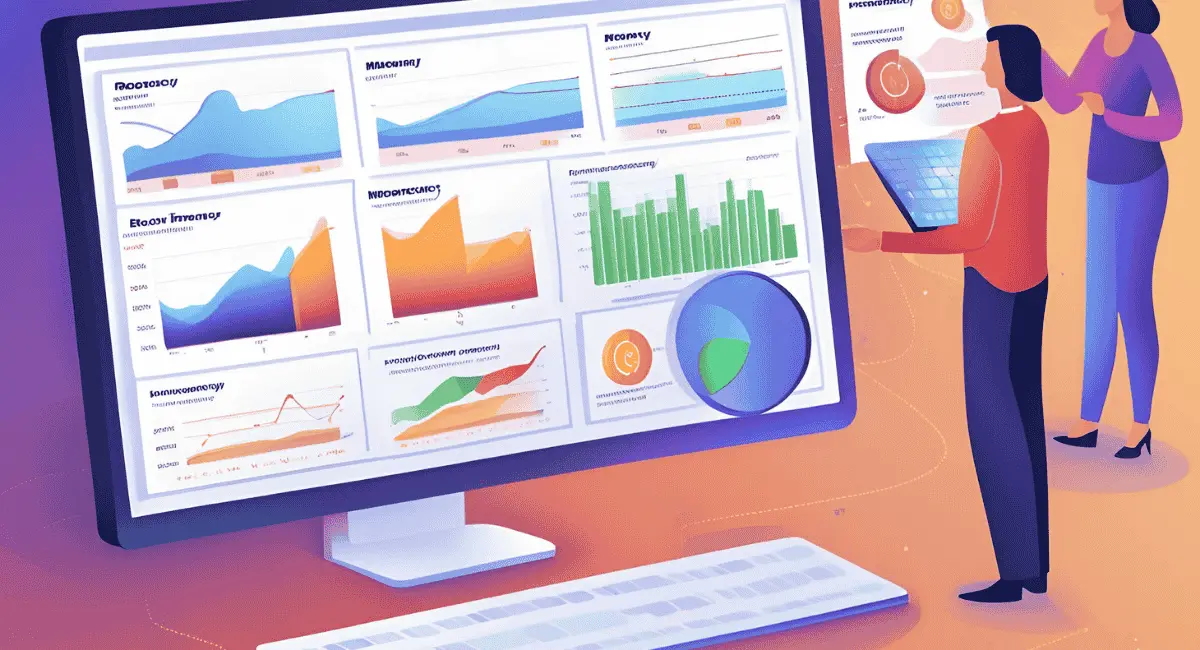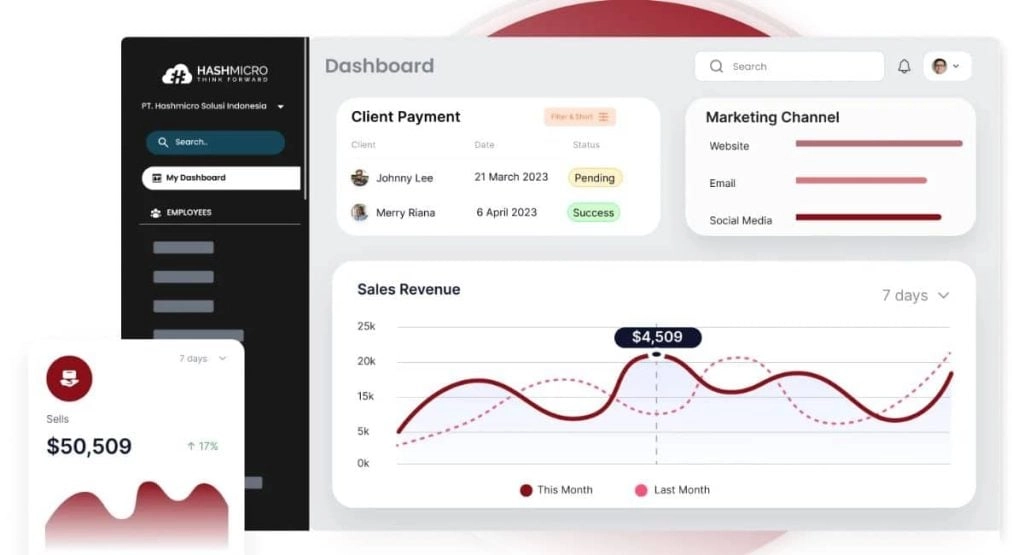Are you sure you’re focusing on the right customers? Many businesses in the Philippines believe they are but end up wasting resources on the wrong audience. RFM analysis can help you pinpoint your most valuable customers—those who spend the most, shop often, and stay loyal.
What if you could grow your business simply by focusing on the right people? With RFM, you can create campaigns that boost loyalty, retention, and profits. Keep reading to learn how this strategy works and why ignoring it could cost your business more than you think!
Key Takeaways
|
Table of Contents
What is RFM Analysis?
RFM analysis is a method to understand customer behavior by analyzing Recency, Frequency, and Monetary Value. It segments customers into groups, helping businesses create personalized strategies that boost engagement and loyalty.
For businesses in the Philippines, RFM analysis is a game-changer. It helps you focus on your best customers, create campaigns they’ll love, and keep them coming back. With this approach, you can improve customer loyalty, boost satisfaction, and grow your business faster.
Components of RFM Analysis
Recency, frequency, and monetary value (RFM) analysis is a powerful tool for understanding customer behaviour and optimising marketing strategies. Each component provides unique insights into customer engagement, loyalty, and financial contribution. They are:
| Components | Definition |
| Recency | Measures how recently a customer interacted or purchased. It helps identify active customers and create timely campaigns, like upselling for recent buyers or re-engaging inactive ones. |
| Frequency | Tracks how often a customer engages. Frequent buyers show loyalty, allowing businesses to strengthen ties with rewards or discounts. |
| Monetary Value | Assesses how much a customer spends. High spenders are prioritized with exclusive deals or premium services to maintain loyalty. |
Benefits of Implementing RFM Analysis
Implementing RFM analysis offers significant advantages for businesses aiming to understand and engage their customers effectively. By focusing on recency, frequency, and monetary value, companies can uncover insights that drive better decision-making and customer relations.
- Enhanced customer segmentation: Group customers into categories like loyal or inactive, enabling more targeted and effective marketing.
- Improved targeted marketing campaigns: Use RFM scores to tailor messages, such as exclusive offers for loyal customers or incentives for re-engagement.
- Increased customer retention and loyalty: Personalized strategies based on RFM profiles build stronger relationships and boost repeat business.
- Optimized resource allocation: Focus efforts on high-value customers to maximize returns and reduce wasted resources.
By leveraging RFM analysis, businesses, particularly in the Philippines, can enhance their customer engagement strategies, leading to sustainable growth and improved customer satisfaction.

Steps to Conduct RFM Analysis
RFM analysis is a valuable tool in customer relationship management, helping businesses understand and segment their customers for better engagement. Here’s how to conduct it effectively:
- Data collection and preparation: Collect and organize transactional data, ensuring it’s clean and accurate. Reliable data is essential for meaningful insights and effective customer management.
- Assigning RFM scores: Score customers on Recency, Frequency, and Monetary Value. Higher scores highlight top-performing customers, guiding marketing and sales priorities.
- Segmenting customers: Group customers into segments like high-value or low-value. Tailor strategies to each group for more efficient resource allocation and targeted engagement.
- Interpreting the results: Analyze the segments to uncover customer behavior patterns. Use these insights to refine campaigns and improve customer relationship strategies.
By following these steps, businesses can harness RFM analysis to strengthen customer relationships, improve retention, and optimize their marketing strategies.
Practical Applications of RFM Analysis

RFM analysis offers businesses valuable insights that can be applied to various strategies for improving customer engagement and revenue. Here are some practical applications:
- Personalizing marketing messages: Tailor campaigns to reflect customer preferences and shopping habits. Filipino businesses can use RFM to send product recommendations or targeted discounts, ensuring promotions resonate with specific segments.
- Identifying high-value customers: Pinpoint top customers who generate the most revenue and referrals. Reward them with loyalty perks or exclusive offers to strengthen relationships and encourage advocacy.
- Re-engaging inactive customers: Understand inactivity patterns and design win-back strategies. Businesses can reconnect through personalized emails or discounts, motivating these customers to return and make new purchases.
By leveraging RFM analysis in these ways, businesses in the Philippines can create more effective campaigns, retain their best customers, and reignite relationships with lapsed ones, ultimately driving long-term growth.
Customer Segmentation Example Using RFM
RFM analysis allows businesses to segment customers into actionable categories, helping tailor strategies to meet their needs effectively.
VIP Customers
VIP customers are those who frequently shop and contribute significantly to your revenue. These customers often have a strong connection with the brand and expect a high level of service.
To maintain their loyalty, businesses can offer exclusive perks such as early access to sales, priority services, or personalized discounts. Recognizing their value with tailored programs helps ensure their continued engagement and advocacy for your brand.
At-Risk Customers
At-risk customers are previously active buyers who have recently shown decreased interaction or purchases. They may have shifted their attention to competitors or lost interest in your offerings.
Reactivating these customers requires personalized campaigns, such as special discounts or tailored product recommendations. By addressing their specific needs and preferences, businesses can rekindle their interest and rebuild the relationship.
New Customers
New customers are those making their first purchase and represent an opportunity to establish long-term loyalty. To encourage them to return, businesses can offer welcome discounts, loyalty points, or follow-up promotions.
A positive first impression is crucial, as it sets the tone for future interactions. Consistent engagement and personalized communication can help convert them into repeat buyers.
Dormant Customers
Dormant customers are those who haven’t engaged with your brand for an extended period. Their inactivity could be due to various reasons, such as changing needs or a lack of engagement.
Offering compelling incentives, such as exclusive deals or time-limited discounts, can help reignite their interest. Reconnecting with this segment requires targeted communication that reminds them of your brand’s value.
Using RFM segmentation, businesses can create targeted strategies to engage each group effectively, ensuring stronger customer relationships and improved retention.
Challenges in Managing RFM
Implementing RFM analysis comes with challenges that businesses must address to maximize its effectiveness. Some of those that you need to be aware of are:
- Data privacy and compliance: Adhere to privacy laws like the Philippines’ Data Privacy Act. Secure practices and transparency build trust and ensure compliance.
- Ensuring data accuracy: Inaccurate data leads to flawed insights. Regular audits and proper database management are vital for reliable analysis.
- Integrating RFM with other strategies: Combine RFM with tools like CRM systems or social media campaigns for a more complete understanding of customer behavior and better results.
Addressing these challenges ensures that RFM analysis delivers accurate insights, enhances customer trust, and integrates seamlessly into broader marketing strategies.
Easily Analyze RFM with HashMicro’s CRM Software

HashMicro’s CRM software simplifies RFM analysis, empowering businesses to understand customer behavior and craft targeted strategies. With features specifically designed to support data-driven insights, businesses can seamlessly segment customers and personalize their marketing approaches.
This robust toolset ensures accurate customer profiling and more effective engagement, leading to better customer retention and revenue growth. Here are five features of HashMicro’s CRM that can help with RFM analysis:
- Customer Segment (RFM) Analysis: Allows businesses to automatically segment customers based on Recency, Frequency, and Monetary data, providing actionable insights for targeted campaigns.
- Upselling Recommendation: Suggests products frequently bought together or based on customer history, leveraging RFM data to maximize sales opportunities.
- Sales Loyalty Management: Helps design and implement loyalty programs tailored to high-value customers, encouraging repeat purchases and sustained engagement.
- In-Depth Reports: Provides detailed reports on best-selling products and top customers, enabling businesses to focus on high-performing segments identified through RFM analysis.
- Custom Printout in Quotation: Enables personalized quotations for different customer segments, reflecting their unique preferences and purchase behaviors.
By integrating these features into their operations, businesses in the Philippines can unlock the full potential of RFM analysis. HashMicro’s CRM software not only streamlines the analytical process but also ensures that insights are translated into actionable strategies for long-term customer relationship management.
Conclusion
Understanding your customers better is key to making smarter business decisions and driving growth. RFM analysis gives you the tools to identify your best customers and improve retention rates. With the right approach, you can strengthen relationships while maximizing the value of each interaction.
HashMicro’s CRM software makes this process even easier, offering features that simplify RFM analysis for actionable insights. From segmenting customers to creating personalized campaigns, it’s designed to help businesses achieve long-term success.
Take the next step in optimizing your customer management strategy by scheduling a free demo with HashMicro today!

Frequently Asked Questions
-
How do you interpret RFM scores?
RFM scores rank customers based on recency, frequency, and monetary value. Higher scores indicate more valuable customers, helping businesses prioritize retention and engagement strategies.
-
What is RFM segmentation?
RFM segmentation groups customers by purchase behavior into actionable categories. It allows businesses to target each group with personalized campaigns for better engagement and results.
-
What is the purpose of the RFM analysis?
RFM analysis helps businesses identify and focus on their most valuable customers. This improves marketing efficiency, boosts loyalty, and increases revenue through targeted strategies.






































































